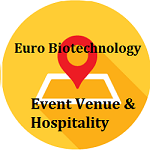
Soeren Schmechta
University of Leipzig, Germany
Title: Molecular characterization of Chlamydomonas reinhardtii for adaption to a technical biofilm
Biography
Biography: Soeren Schmechta
Abstract
Conventional photobioreactors cultivate algae in suspension, hence to maintain optimum cultivation conditions, mixing is essential for delivery of inorganic carbon, nutrient and light. Since bioreactors have highest production rate at high biomass load per volume, cells are exposed to flickering light which is favorable for the photon usage efficiency. Energetic costs for mixing, harvesting and biomass refinement are too high for efficient energy conversion from light to biofuels. As an alternative approach, biofilm reactor had been discussed where the cells are fixed and cells on the surface are exposed permanently to full sunlight whereas cells in lower layers suffer from light limitation. This is due to the steep light gradient, a stack of 10 cells is enough to absorb 90% of the light intensity. Therefore, to find a solution to prevent photoinhibition at the surface and light limitation in deeper layers is necessary. Here, we want to mimic the geometry of higher plant leaves where the inner surfaces have different refractive indices, thereby light is distributed more homogenous inside the leaf. For technical biofilms, single cells can be cultivated in porous glass. The incoming light is then distributed due to the different refractive indices inside the glass. For this purpose, cells must be attached to a glass surface in defined distances and positions by introducing a glass anchor protein fixed by a native cell wall protein and the anchor interacts with the glass environment. This recombinant protein is combined with epitopes for further investigation (proof of success) and introduced by electroporation.

